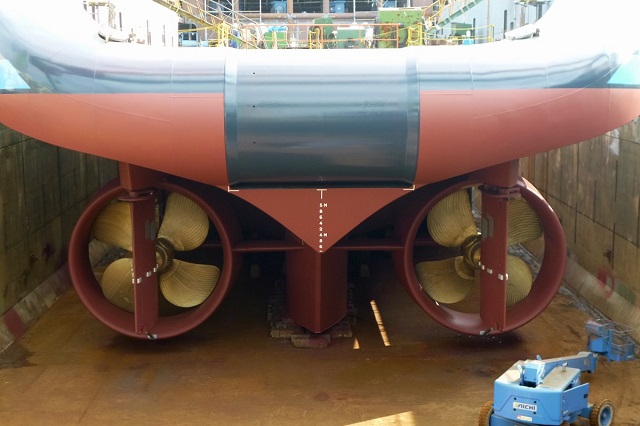New Long-Distance Towing Vessel Launched
A new long-distance towing vessel has been launched by Niigata Shipyard for ALP Maritime Services. ALP Striker is the next generation of long distance towing, positioning and hook-up vessels, says its owner.
The vessel is designed for towing ultra-large objects such as FPSOs and FLNGs from their construction yard to their offshore installation site. The construction yards are often in the Far East and SE Asia, and the destinations can be anywhere between Australia/SE Asia to West Africa, Brazil, US Gulf and the North Sea.
Due to the towing distance required, towing vessels that have a large fuel capacity are required to make the transit, preferably non-stop.
“FPSOs and FLNGs have been and still are increasing in size and weight over the past two decades and the workscope for towage (transport) vessels has changed,” says Paul Mulder, CEO for the vessel’s owner, ALP Maritime Services B.V. “We established that the existing fleet of straightforward towing vessels was no longer adequate for the task. They are not versatile enough anymore and become marginal in their fuel capacity, bollard pull and lacking redundancy on the vessel’s main systems.
“Clients want to combine the towage with the positioning and hook-up operations and often have an internal requirement for a DP II vessel to be allowed to participate in that scope of work. Most towing vessels do not offer that, and as a result a separate spread of AHTS would be required for the hook-up,” says Mulder. “By building a high-spec vessel complying with DNV DYNPOS AUTR notation we offer our clients a vessel that can continue in the positioning / hook-up operation on arrival at site. This offers a considerable economic advantage.”
The 89m vessel has a bollard pull of 306 tons to accommodate the need to tow larger, heavier units. These vessels do not necessarily have good seakeeping characteristics when towed. For example, box-shaped FPSOs such as Dalia and Pazflor need more powerful vessels to achieve a reasonable transit speed, says Mulder.
“When objects become so large that more than two vessels are required for the tow, preferably we use DP II vessels offering redundancy on the vessel’s main systems. DP II is not only an important feature for installation, but also requires a vessel to have back-up on all main propulsions systems, which is also enhancing the safety of the towing operation,” he says.
“We decided to increase our vessel’s capacity by 50 percent compared to our competition. This enables us to perform any job with two tugs, while our competitors need three tugs.”

The products and services herein described in this press release are not endorsed by The Maritime Executive.
